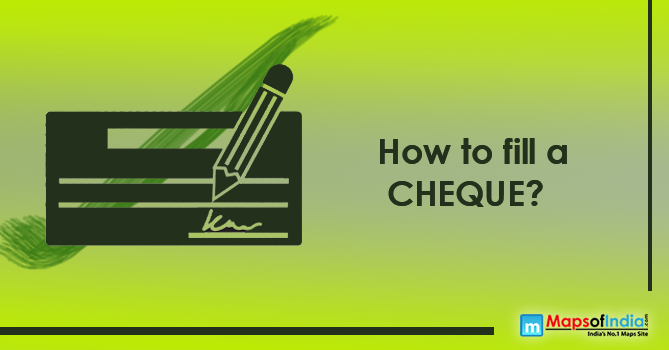A cheque is a leading payment instrument method, which is non-cash in nature. Many developing economies are undertaking online payment solutions, but cash and cheque are currently preferred modes of payment worldwide. That is why it becomes vital to know the proper way to fill a cheque.
It consists of the account holder’s and bank related information on the MICR band. Therefore, a payee sends the cheque to the bank, and it submits to the originating bank for verification purposes and the amount to the specified payee.
If one doesn’t know the correct way to fill a cheque, then someone gets a chance to misuse your cheque. For instance, if you don’t cross the word ‘bearer’ and lose your cheque, anyone can encash it.
Understanding the mentioned details on a cheque
One can find IFSC Code at the top of the cheque. Bank branches that permit National Electronic Fund Transfer (NEFT) have Indian Financial System Codes (IFSC). To credit the amount electronically, one has to state the bank’s IFSC Code with the account.
A person’s bank account number is on his/her bank cheque and can see their name at the bottom right corner.
At the bottom line of your bank cheque only, one can view some numbers or codes there. The first six numbers are your cheque number.
The other nine numbers are your MICR (Magnetic Ink Character Recognition)
code. This number assists banks as it leads to swift cheque sorting. With MICR code, a machine comprehends your cheque, informing you about a particular bank and its location.
Banks receive thousands of cheques, and hence manual sorting and functioning are not feasible. Banks set up the MICR code to do that task in a few seconds with the assistance of a machine. MICR code is then subdivided into three parts.
The first three digits of the MICR code help machines identify the branch’s location that has issued this cheque, and these are your city’s PIN code first three numbers. The next three digits enable the name of the bank. For example, the HDFC bank code and the SBI bank is 240 and 002, respectively, and the last three digits reveal the precise location of the bank branch.
With the assistance of Transaction ID, the machine gets to know whether your cheque is a local cheque or payable at par at all branches. If your bank cheque is a local cheque, it can only be submitted to your home bank branch, whereas if it is at par, it can be deposited in any bank branch.
Following are the steps to fill a cheque.
1) Put the name of the payee beside ‘Pay ‘. Write ‘Self ‘if you write a self cheque to take out money from your bank account. Write just after ‘Pay’, without leaving blank space in order to ensure no one can make alterations. Draw a line so that no one can add another name to your cheque.
2) Mention the amount that you want to pay through cheque in words in the ‘Rupees रुपये ‘tab without leaving any blank space, write ‘only ‘after the amount number ends and draw the line after it
3) Write the amount in numbers in the given box and mention ‘/-‘at the end.
4) At the bottom right corner, one can see your name, just sign near your name. Your signature should match the specimen signature registered with the bank.
5) Cancel ‘Or Bearer and या धारक को ‘. If you one doesn’t cancel it, then anyone can encash that cheque.
6) Now, at the top right corner, you can see the date tab. Write cheque issue date there. One can write today or the next date on a cheque. It’s not mandatory to write today’s date on the cheque. For example: Say I was filling a cheque on March 1, 2020, but I want the payee to submit my issued cheque after March 15; I can write 15-03-2020. In this way, the payee will need to deposit an issued cheque on or after January 15, and he cannot deposit a cheque before the date of issuance.
7) Draw two parallel lines on the top of the cheque and write ‘A/C Payee ‘between them. As stated above, it’s not always necessary, but you’re recommended to write. Also, one shouldn’t write an account payee if he/she is filling a self cheque.
It’s important to know that all bank cheques have the same information; only format and colour theme change accordingly.




